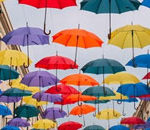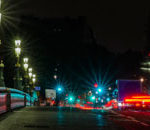When you combine strobes with ambient light on a sunny day, you’re likely to run into problems with achieving a shallow depth of field. In the following video, Zach Gray explains how to solve this problem using a neutral density filter:
“Problem: Using high-powered strobes can force you to use an undesirable f-stop, inhibiting your control over the depth of field.”
When you’re using strobes on location in bright sunlight, your aperture choice is limited. Most studio strobes can’t be synced over 1/250 of a second. And at that shutter speed, combined with the strobe on a bright day, you’ll probably need to use an aperture of f/8 or f/11—or even smaller—to get a correct exposure. But what if you really want to use that f/1.4 on your 50mm lens?

Neutral Density Filter
You need to somehow reduce the light entering the lens so you can open up the aperture without overexposing the image. The solution is quite simple: use a neutral density filter.
What is a Neutral Density Filter?
A neutral density filter is essentially a pair of sunglasses for your lens. When attached to your lens, the filter blocks out some of the light without affecting color. By blocking some of the light, a neutral density filter allows you to use wider apertures and therefore get shallower depths of field in bright conditions.
How Do You Use an ND Filter?
Gray describes his workflow with an ND filter as follows:
- Set up your shot with flash as you normally would.
- Put the neutral density filter on your lens.
- Depending on the filter’s number of f-stops, open your aperture up by that many stops. For example, Gray uses a 3-stop filter, so he opens up his aperture by 3 stops.
- Shoot away. You’ll get the same exposure from step 1, but you’ll end up with a shallower depth of field.

Portraits Shot with a Strobe and ND Filter
“Answer: A neutral density filter allows for a darker exposure while keeping a lower f-stop, slower shutter speed, or higher ISO setting.”
Like This Article?
Don't Miss The Next One!
Join over 100,000 photographers of all experience levels who receive our free photography tips and articles to stay current:






Leave a Reply